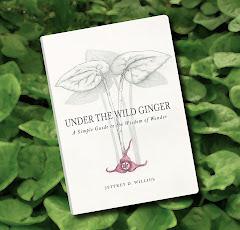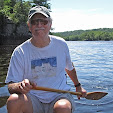Our hotel gave us our first clue. The cosmopolitan Ole Serene Hotel, which served as the interim U.S. embassy after the 1998 terrorist bombing, is situated right next to the 45-square-mile Nairobi National Park. Its restaurant, bar and about half its rooms look out directly over the park’s broad plain of scattered scrub bush, reportedly home to nearly every species of wild game we’d come to see.
When, at some distance, we spotted our first giraffe, we were already thinking Wow, does it get any better than this? It does.
After another day in the Nairobi area visiting the African Fund for Endangered Wildlife’s wonderful Giraffe Center, the Karen Blixen (Author of Out of Africa under the pen name Isak Dinesen) estate and a few other nearby attractions, we headed 150 km north in our nifty little Nissan safari minivans to the first of four national parks or wildlife reserves encompassed by our safari.
Aberdare National Park, established in 1950, comprises 475 square miles of varied landscapes, ranging from 7,000 to 14,000 feet in elevation. Its rolling, wooded hills and dales, trout streams and cool weather shattered yet more of assumptions we’d had about Kenya’s climate.

NO, BULL!
We stayed at the amazing Ark, a game lodge situated on the edge of a busy animal watering hole and salt lick. Suggestive of the place’s priorities, each room features a light-and-buzzer code system at the head of the beds to alert guests when any of five key animal species shows up—even if it’s in the middle of the night.
Our first glimpse of the watering hole—from the Ark’s broad second-floor deck—saw about a dozen water buffalo, several water buck and wart hogs, a few impala and a marabou stork, all leisurely partaking of the water, the minerals in the soil, or just the relative security of being in an open space where predators have no cover in which to lie in wait for them.
Suddenly, the largest of the bulls began posturing his foul mood with aggressive lunges at the others.
Then, as we watched all these “extras” doing their quiet thing, a few of their heads lifted and turned toward the heavy thicket surrounding the clearing. Slowly, magnificently, the stars of the show parted the foliage curtain and strode deliberately onto the stage.
The elephants—a family comprising seven adults and a baby—made their way down to the mud hole, where they toed the earth with massive feet, then deftly probed the loosened soil with their trunks.
 Suddenly,
the largest of the bulls, presumably the calf’s sire, took issue with
something and began posturing his foul mood with aggressive lunges at
the others—directed eventually toward the baby. Then, just like in all
those Nature programs I’ve ever watched about the lives of elephants,
the rest of the family circled around to protect the baby.
Suddenly,
the largest of the bulls, presumably the calf’s sire, took issue with
something and began posturing his foul mood with aggressive lunges at
the others—directed eventually toward the baby. Then, just like in all
those Nature programs I’ve ever watched about the lives of elephants,
the rest of the family circled around to protect the baby.
The brute realized he wasn’t going to win this one, and strode off to recharge his ego. A poignant reminder that the importance of family extends to all creatures.
EYES IN THE DARK
Even more dramatic was the episode we experienced that night. Along with a few other diehards, Sally and I had stayed up late to observe the nightlife at the floodlit watering hole. The elephants had gone, leaving just a dozen water buffalo and a few warthogs calmly milling around.
We noticed movement at the dim edge of the pool of light. A single hyena scuttled furtively around the perimeter, eyeing the other animals for a weakness, his snout raised to sniff, perhaps, for the easier meal of carrion. A scout, I guessed out loud, wondering what he’d have to say when reporting back to his pack.
A few awestruck human beings could muster no words—just silent glances and subtle, knowing wags of the head.
 No
more than a minute after the scout turned back into the bush, a chorus
of hyenas’ excited, bone-chilling laughter erupted from the pack. From
just the rising fervor of their shrieks and the faint glow of their eyes
as they darted between clumps of undergrowth, it was obvious they were
converging on something.
No
more than a minute after the scout turned back into the bush, a chorus
of hyenas’ excited, bone-chilling laughter erupted from the pack. From
just the rising fervor of their shrieks and the faint glow of their eyes
as they darted between clumps of undergrowth, it was obvious they were
converging on something.Then all the glowing eyes were together, and, as the insane cackling rose to a crescendo, so did another sound, the terrible bleating of some poor little gazelle or dik-dik.
Mercifully, the frenzy soon quieted down, and the chill night air was still again. And a few awestruck human beings could muster no words—just silent glances and subtle, knowing wags of the head—at this stark reminder of reality in this unsentimental domain of predator and prey.
(Just as we were about to turn and go back indoors for the night, another movement down in the light caught our eye. Again, a single hyena was sneaking out of the bush, right where we’d seen and heard all the drama. He slunk across the mud flat, passing just below us, in his mouth the still warm leg of the animal he and his pack had just killed.)
–//– –//– –//–
On a lighter note, here are some of the other beautiful—albeit less dramatic—things we saw in and around the watering hole at Aberdare.
















